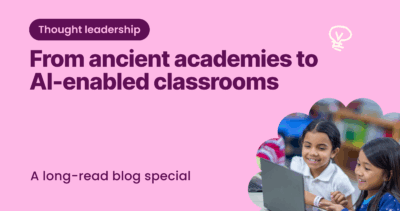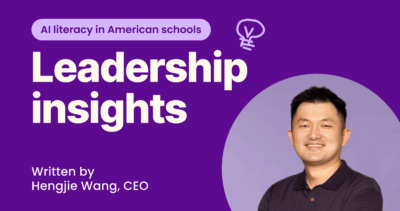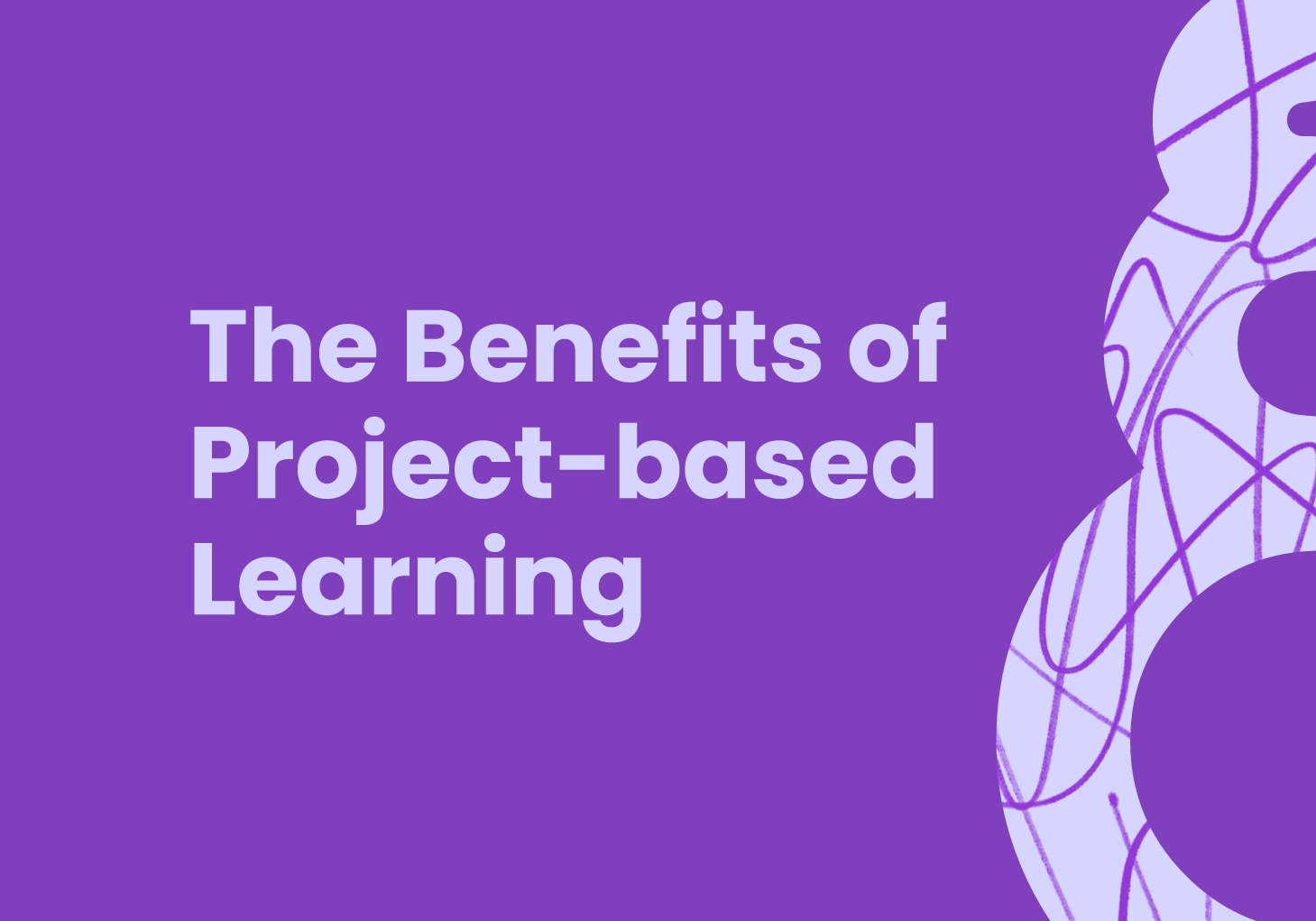
Shirin Bradfield
This blog was inspired by an episode of the Teacher Teacher podcast with Steve Martinez. If you’d prefer to listen along, head here!
Today’s modern world is packed with 21st-century problems, so students need 21st-century skills in order to confidently tackle whatever their futures hold. Often this means looking outside what textbooks and traditional teaching methods can offer and adapting to inviting real-world learning experiences, aka project-based learning.
Project-based learning (PBL) can be relatively daunting when starting out for the first time; it means stopping what you and your students are already familiar with and starting fresh. But once you realize the impact PBL can make for students (especially those who think or learn in different ways), it’ll soon become a go-to learning process in your classroom!
We dove deeper into the benefits of project-based learning with Steve Martinez, a passionate Social Science teacher with a keenness for EdTech, to find out how he instructs his learners through PBL and some top tips for starting out!
What is project-based learning?
Project-based learning or PBL is a way to encourage critical thinking, real-life problem-solving, and an overall curiosity in your students. It’s when students take on a big problem or complex question that they have to solve – but in an authentic way, so their findings have a purpose much greater than simply filling a study guide or producing a test result.
To do this, the problems they investigate should be relevant to themselves, their parents, or their community. Generally, this is how we hone in on a passion a student might have, by getting them to think of things that they might have a personal connection to. This way it’s not about what we as teachers want them to learn, but what they want to help achieve.
To research their projects, students must then go out and speak to and interview community members or experts, which can then be supplemented with classwork. Having these real-world connections drives passion, encourages deeper learning, and helps develop skills far beyond what a textbook can teach.
In terms of output, students can decide on anything they want; whether that’s a video, website, documentary, podcast, the list goes on! It’s also a great way to help students develop skills in the industry they’re wanting to pursue – an aspiring architect might build a diorama, whereas an actor might conduct a play!
What instructional methods should teachers use?
The thing with project-based learning is, it’s not just something the teacher comes up with; it’s also not about the end product, but the experience of getting there and going through the rigor of problem-solving. Again, it’s bigger than the classroom, which means your PBL approach might change lesson-to-lesson. You can guide and give the learning objectives, but overall, these are student-led projects; they must direct their own learning to find solutions based on the questions they seek to answer.
What do you love about project-based learning?
Overall, it allows children to think deeper about the content and therefore learn deeper. Students are constantly having to flex their problem-solving skills. It’s not just about memorization or taking keywords from one place and relaying them into another. It’s also progressing what we know a traditional classroom or learning environment can facilitate; learners are taking project management into their own hands, collaborating with other students, developing their communication skills, and just as importantly, life skills. PBL also prepares students for real-world problems, while also helping them discover what they might want to do in college and beyond, by highlighting what they care about.
Something I love to see is that big lightbulb moment! When students start learning in real-time, they’re understanding in real-time. So suddenly, I’m finding my students light up with a connection they’ve just made to something they discovered in an earlier class, or even across another curriculum. And I know these are moments that wouldn’t happen if I was just lecturing or testing. It not only helps enormously with student learning but student engagement and overall student achievement and retention, too.
What tips do you have for teachers new to project-based learning?
Baby steps. You don’t need to flip your entire classroom or switch up your whole approach overnight. Start by hosting classwide brainstorms with some hard questions – ones that require a lot of thought from a range of perspectives. That’s how the collaboration starts – get onto your digital whiteboards and start chucking down whatever comes to the surface. PBL teaches students that it’s okay to stumble through hard problems – especially when they get to experience everyone else’s thinking and learning process in real-time. Otherwise, in a traditional learning activity, for example, they might be sitting there terrified and frozen because the assignment seems too big to take on alone.
The key is starting with something they’re collectively passionate about and defining what problems need to be tackled from there. So then you can take this concept, tie it to a question, set some boundaries (on your first go), then once comfortable, let students lead the way.
Another great way in is to simply research and read up on PBL from the experts; find out how they do it for their different age groups, whether it’s high school or kindergarten, or by subject!
Is the feedback process any different?
Because of the size and duration of the process, when and how to give feedback can seem complicated and overwhelming. The trick is to delegate! You don’t have to be the sole provider of the feedback; do you have all the answers your students might have questions for? Probably not. So enlist the help of professionals who do. I constantly get feedback from CEOS, journalists, college professors, and so on – people who are specialized in the areas we’re researching will give much richer and more valuable feedback than I ever could. It’s all about teamwork!
It can also be peer-to-peer, just like it would be in the workforce. PBL projects help build a culture of giving, receiving, and reflecting on feedback – super important skills needed for the workforce. Again, this can all be done without you, and during the lesson (so you’re not cramming feedback sessions at home between dinner and family time). Simply create digital spaces with different channels for everyone to give live feedback in and conference with one another.
Another approach is opting for more authentic assessments. Listen in to student conversations – a conversation is a formative assessment. What are they discussing? What knowledge are they showing they’ve retained and understood through casual conversation? Listen to it, log it, and add it towards any final grades.
How do I know when project-based learning is working?
The moment your class feels like a community. Traditional set-ups have students siloed, but PBL is all about helping students work together to find meaningful solutions. By having these outward conversations and collaboration sessions, you’ll see just how much one students ideas can spark another’s, and so on.
When it feels like you’re all in it together, even if you’re doing individual projects, PBL is working. If you can see that community build, and see lightbulbs go off, you’ve reached a different level of collaboration – here, students feel empowered to solve problems bigger than them.
You may also like

From ancient academies to AI-enabled classrooms

Improving AI literacy in American schools

